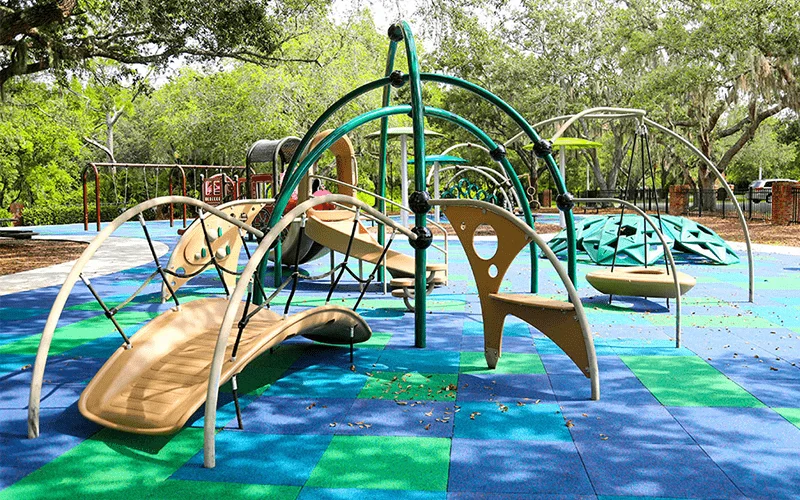Playgrounds must always guarantee the safety and well-being of the children who use them, and to meet this objective, protective surfaces are an essential element. These surfaces cushion the possible blows or falls children may suffer when using different playground equipment or running and tripping. Historically speaking, there have been many injuries worldwide related to the improper use of playgrounds, some even severe; however, these could have avoided these injuries or their impact minimized with protective surfaces and proper use of the facilities. Therefore, in this article, we will talk more in-depth about why protective surfaces are important.
Purpose of protective surfaces
In playgrounds, children run, jump, and ride on the equipment, all of this loaded with energy and excitement, so they are prone to falls and blows; therefore, playground manufacturers must ensure the safety of users both at the level of quality of the equipment and all the areas that make it up. Protective surfaces in playgrounds are essential to prevent severe injuries to children and to promote their fun and their physical, social, and cognitive development. Therefore, it is important to choose the most appropriate material for each case and keep it in good condition.
Types of protective surfaces
Different types of protective surfaces can be used in playgrounds, and each has advantages and disadvantages. Wood chips, for example, can be inexpensive and easy to install but can cause splinters or allergies in some children and can become displaced, compacted, or contaminated; sand is also cheap but also requires regular maintenance similar to wood chips, and both materials do not have as effective cushioning properties.
Gravel provides good stability but can be uncomfortable to walk or sit on, posing a choking hazard if children put it in their mouths. Rubber surfaces can be crushed, which has a high cushioning capacity and good durability. However, it can be more expensive than other materials, poured in place, which creates a uniform surface and is fixed in place directly, with excellent resistance to wear and weather conditions, and allows you to create custom shapes and designs, so it requires professional installation; you also have rubber in tile form that makes another unitary surface that is installed with adhesive glue, have good shock absorption and easy cleaning.
Selecting the most suitable
When choosing the most suitable protective surface for a playground, several factors must be considered, such as the available budget, the type and height of playground equipment, the climate, and the intended use of the playground. The protective surface must be capable of cushioning falls and preventing serious injury, especially on equipment with a certain height. Consider durable and easy-to-maintain options to ensure integrity over time and minimal maintenance without affecting the active properties of the product, which can withstand inclement weather without being affected. Therefore, getting proper advice from a playground supplier with experience and knowledge is essential to select the most appropriate option since an excellent protective surface can make the difference between a fun and safe playground and a dangerous and boring one.
What do you think about this topic? Do you think protective surfaces are really important?
For more information about protective surfaces, you can visit the following link.
